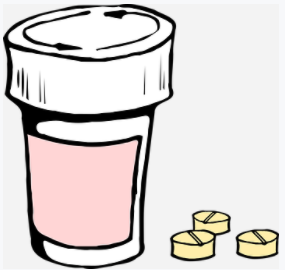Vitamin C is a powerful antioxidant and water-soluble vitamin, also known as ascorbic acid. Humans differ from animals in that our bodies can’t produce vitamin C on its own, but must get it elsewhere.
What are the health benefits of vitamin c?

Vitamin C aids the body in forming and maintaining connective tissue, blood vessels, skin, and bones.
Experts say that vitamin C is one of the most efficient and safest nutrients. While it may not cure the common cold, it can help reduce the risks of contracting one and helps to ease symptoms.
There are other wide reaching benefits to the vitamin, including protecting against eye disease, skin wrinkling, prenatal health issues, immune system deficiencies, and cardiovascular disease.
Other specific benefits of vitamin C…
• Our body uses vitamin C to make L-carnitine, collagen and some neurotransmitters.
• Vitamin C is also involved in the metabolism of protein.
• We need vitamin C for the formation of collagen that is part of the connective tissue in the body’s organs and plays a role in wound healing.
• Vitamin C is also a good antioxidant, which makes it good in preventing cancer. It has the important role of regenerating other antioxidants in the body.
• There’s research going on that looks into whether or not vitamin C is definitely linked to its antioxidant properties or whether there is something else going on that makes this a good cancer fighter.
• Oral vitamin C produces tissue and plasma concentrations that are tightly controlled. As a water-soluble nutrient, it is excreted by the urine.
What are the recommended doses of Vitamin C?

The dietary intake of vitamin C has been set up by the Food and Nutrition Board. It sets up the Daily Reference Intakes for all types of nutrients.
The recommended doses of vitamin C includes the following:
• Ages 0-6 months, the intake should be 40 mg per day
• Ages 7-12 months, the intake should be 50 mg per day
• Ages `1-3 years, the intake should be 15 mg per day
• Ages 4-8 years, the intake should be 25 mg per day
• Ages 9-13 years, the intake should be 45 mg per day
• Ages 14-18, the intake should be 75 mg per day
• Those who are older than 19 years, the intake should be 75 mg per day
- Pregnant women – pregnant women need 85 milligrams of vitamin C every day
- Breastfeeding women – for women who are breastfeeding, it’s a much higher expectation with 120 milligrams of vitamin C every day
What are food sources for vitamin C?

- Bell peppers – red, green, yellow and orange
- Citrus fruits – oranges, lemons and limes
- Broccoli
- Apples
- Asparagus
- Kiwi
- Berries – strawberries, raspberries
- Cabbage
- Cauliflower
- Honeydew melon
- Mango
- Cantaloupe
- Watermelon
- Papaya
- Kale
- Spinach
- Brussels sprouts
- Pineapple
- Tomatoes
- Cabbage
- Winter squash
- Potatoes
- Fortified foods such as cereal, breads, and grains
*Side note: Prolonged storage and cooking may destroy vitamin C, so it’s best consumed from raw fruits and vegetables.
Half a cup of red pepper or a cup of fresh orange juice is enough to achieve your recommended daily allowance; however, if you’d like to change things up there are a variety of options:
- 1 cup of cantaloupe equates to 59 milligrams of vitamin C
- 1 cup of tomato juice is worth 45 milligrams
- 1 medium sized kiwi equates to 70 milligrams of vitamin C
- 1 cup of cooked broccoli will rack up 74 milligrams
- Half a cup of green pepper is 60 milligrams of vitamin C
- Half a cup of red cabbage is 40 milligrams of vitamin C
Dietary supplements of vitamin C
Dietary supplements of vitamin C is given in the form of ascorbic acid, which has the same bio-availability as the naturally occurring kinds of vitamin C eaten in food sources of vitamin C.
Other forms of vitamin C supplements include: calcium ascorbate, sodium ascorbate, ascorbic acid with bioflavonoids, dehydroascorbate, xylonate, threonate, and calcium ascorbate.
A few research studies using human participants found that the bio-availability is different depending on the form of vitamin C used.
Other studies have indicated that there are no differences in the bio-availability of the various types of vitamin C.
Featured Recommended Product: (Easily add to smoothies, drinks and other foods.)
Thompson Vitamin C Powder — 5000 mg – 8 oz
What about vitamin C deficiency?

Vitamin C deficiency results in scurvy. The timeline for getting scurvy depends on the body’s initial stores of the vitamin in the body. Signs begin to show up within a month of withdrawing all vitamin C from the diet. Symptoms start out with tiredness, discomfort, and other flu-like symptoms.
As scury progresses, the individual can develop gum inflammation, poor healing of soft tissue, petechiae, purpura, poor wound healing, and ecchymosis of the skin. Other signs of a deficiency include swollen and bleeding gums, depression, and corkscrew hairs.
10 Warning Signs Of Vitamin C Deficiency

- Easy bruising
- Inflamed, bleeding, or swollen gums
- Slow wound healing
- Dry and splitting hair and/or nails
- Dry, Rough, and Red Skin – Another common (yet harmless) skin issue that comes as a result of low levels of vitamin C is keratosis pilaris. This causes hard and small bumps on the face, buttocks, thighs, and arms.
- Depression & Fatigue –The Mayo Clinic points to studies involving hospitalized patients, as they often have low levels of vitamin C. The study found that by providing said patients with supplements their mood improved up to 34%.
- Frequent Nosebleeds
- Unexplained Weight Gain – Low levels of vitamin C result in a rise in waist circumference and body fat. Arizona State University researchers discovered that how much vitamin C we absorb affects the body’s ability to use fat as a source of fuel when at rest and during exercise.
- Painful & Swollen Joints – The Arthritis Foundation conducted a study that showed people with low levels of vitamin C were 3 times more likely to have rheumatoid arthritis compared to those who consumed enough of the vitamin.
- Poor Immune Function – There are numerous cells within our immune systems that need vitamin C to perform basic tasks, so a deficiency diminishes resistance against pathogens.






